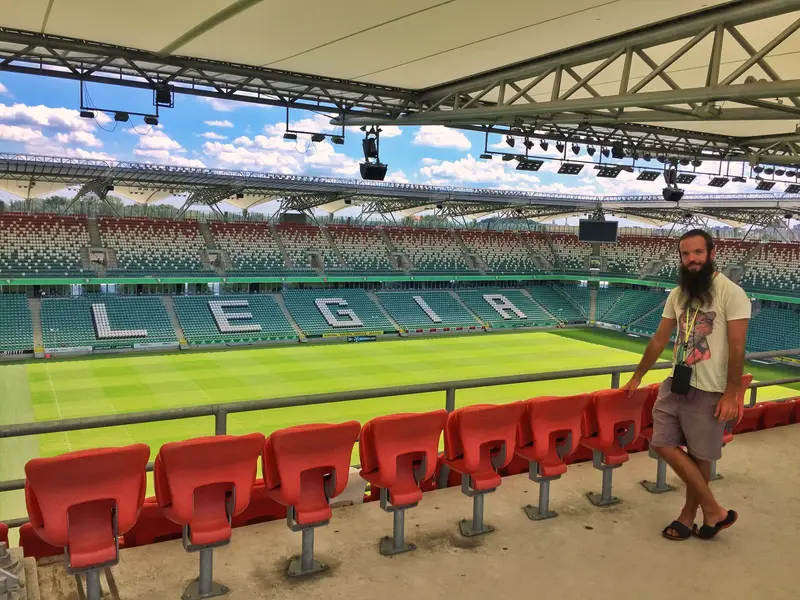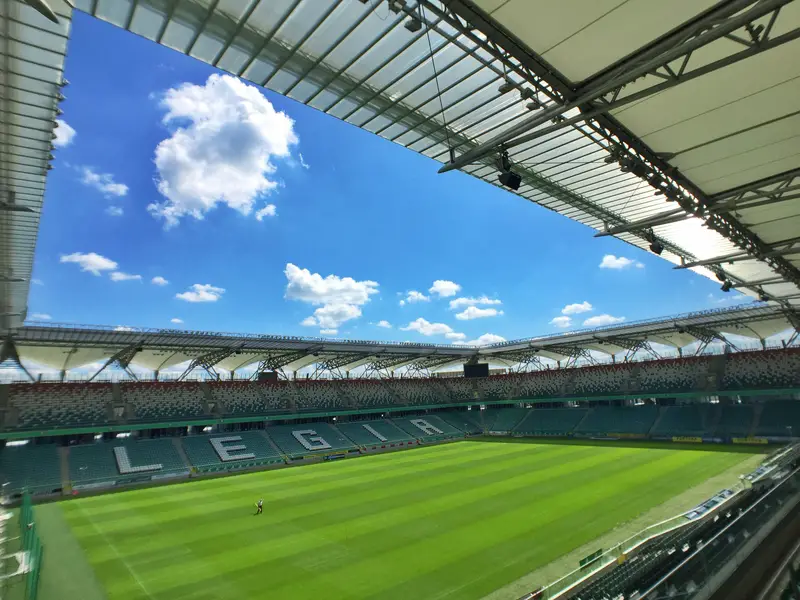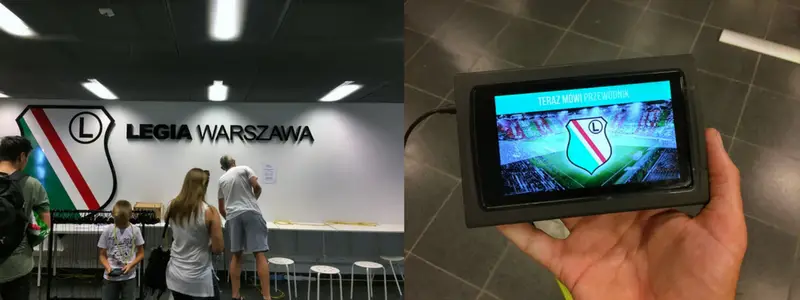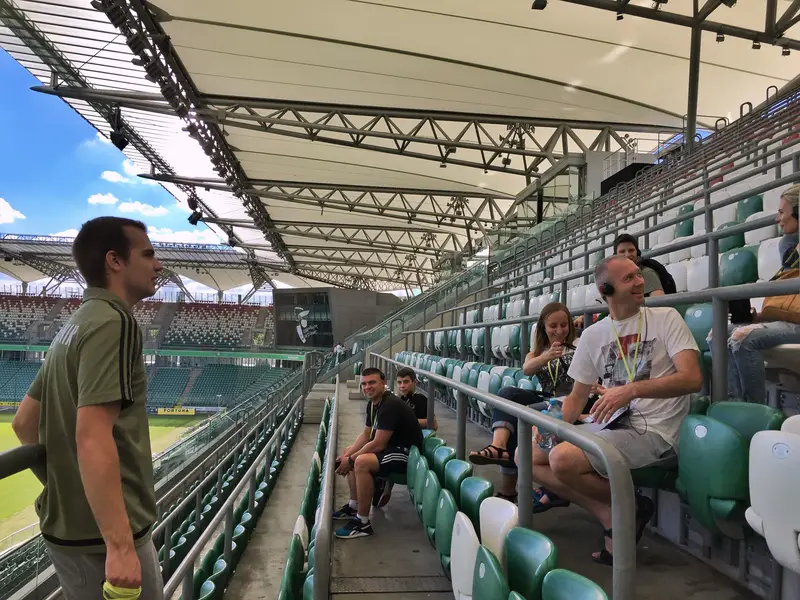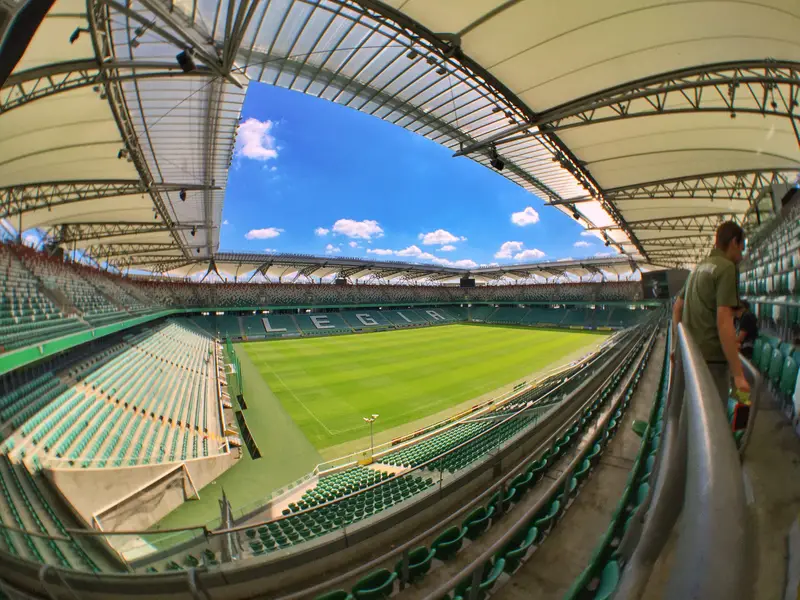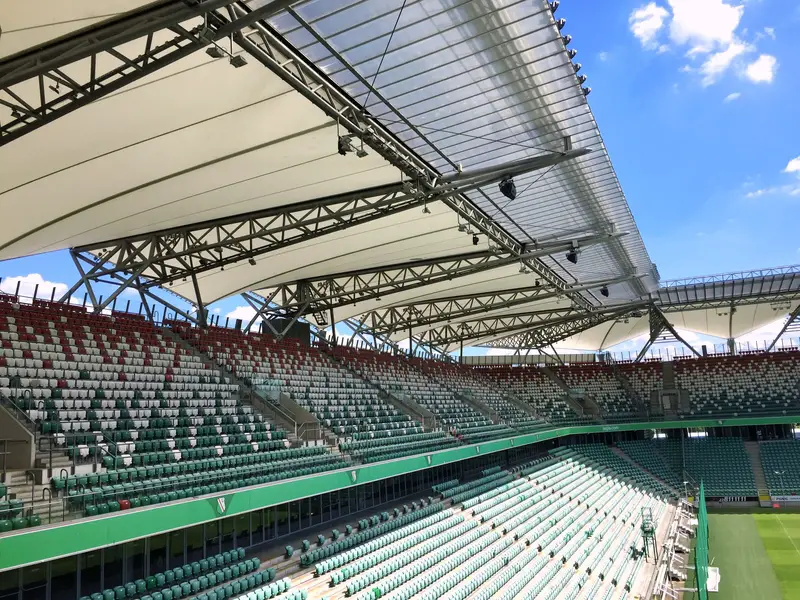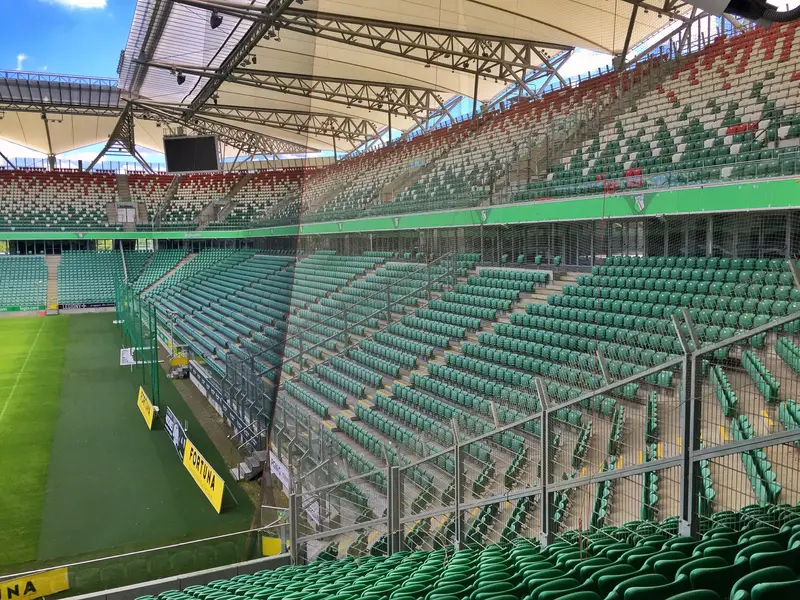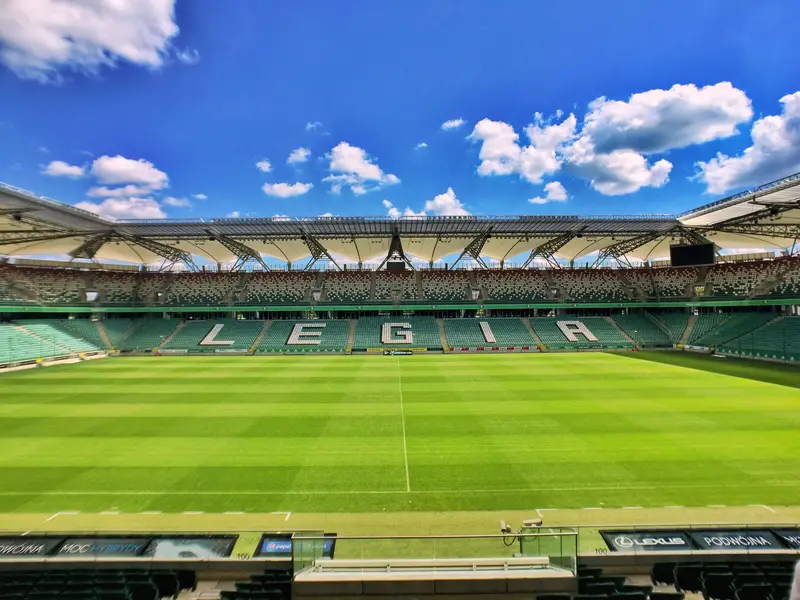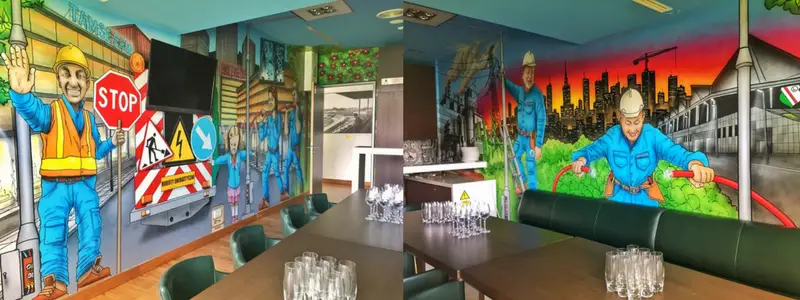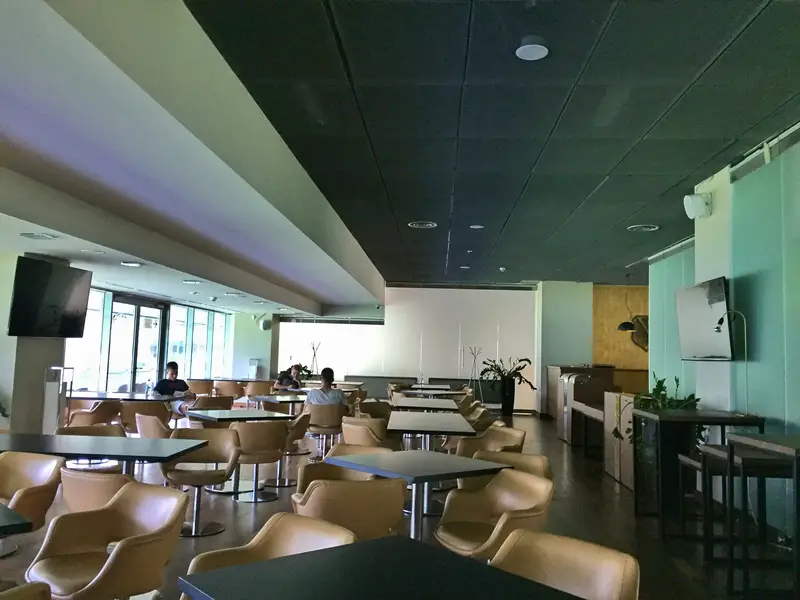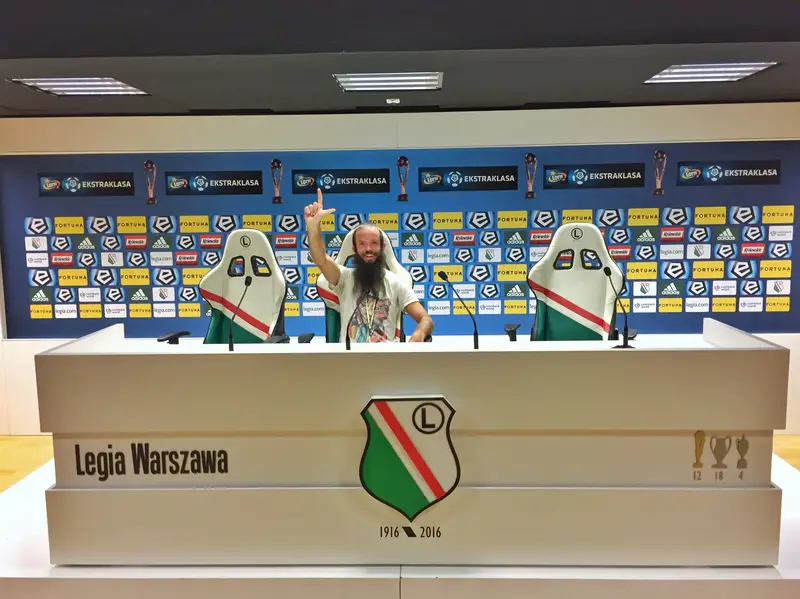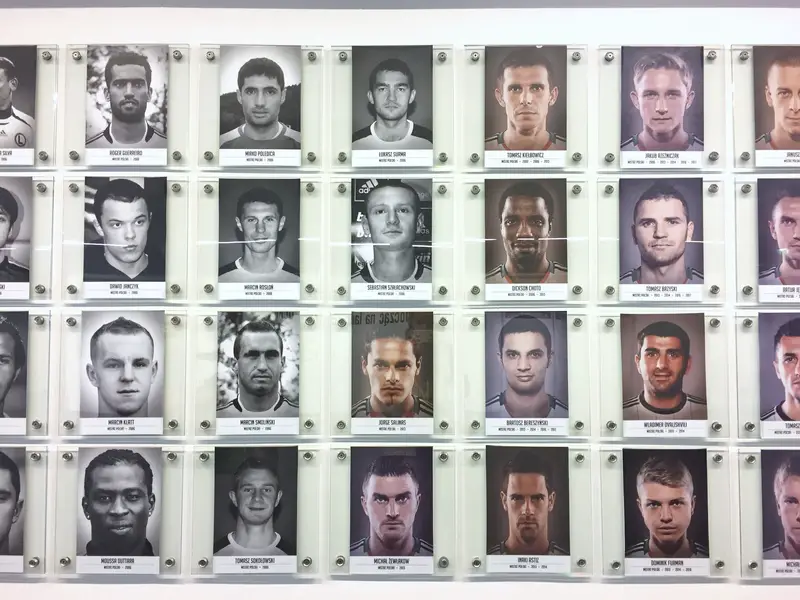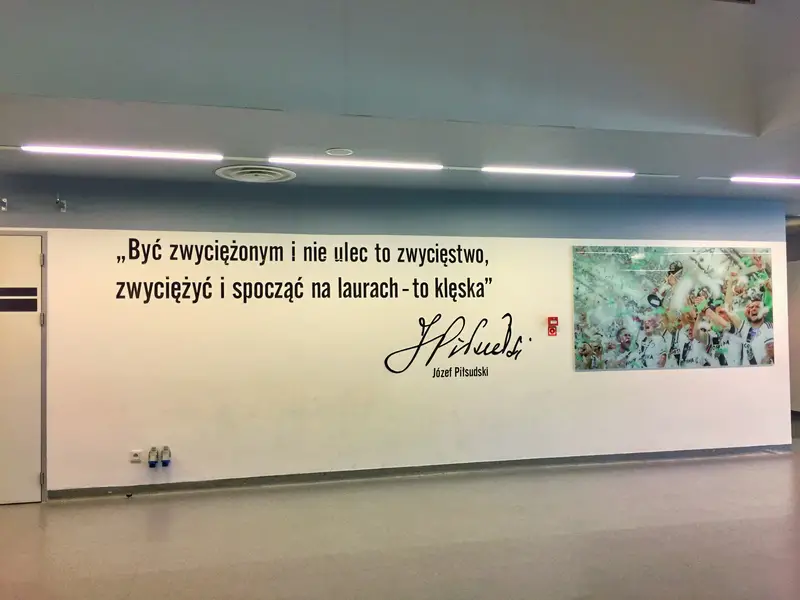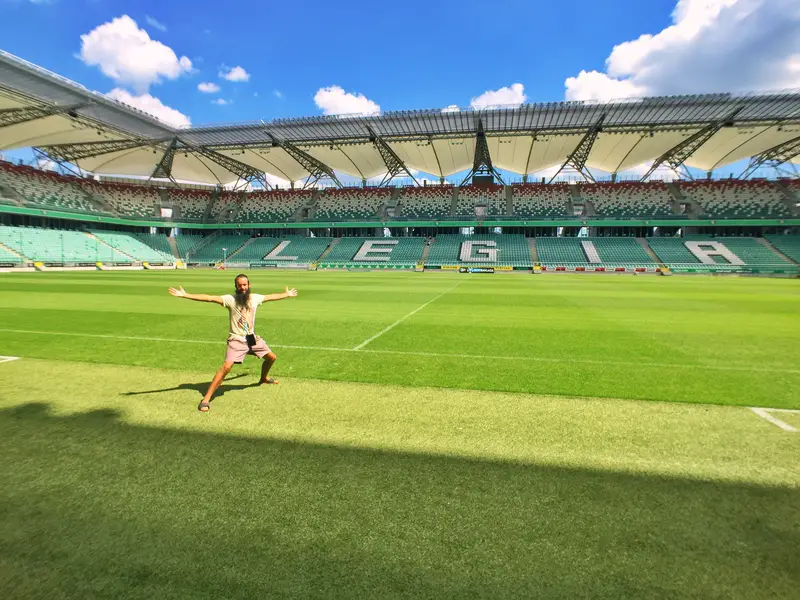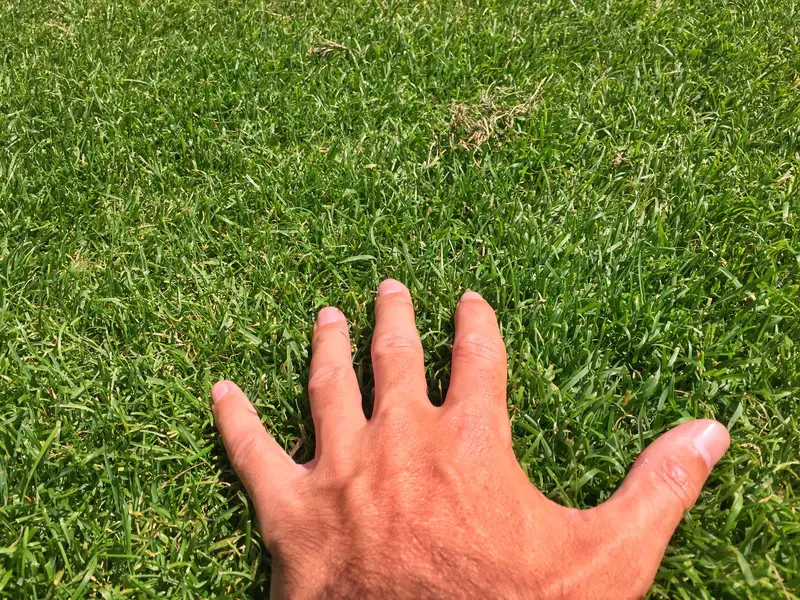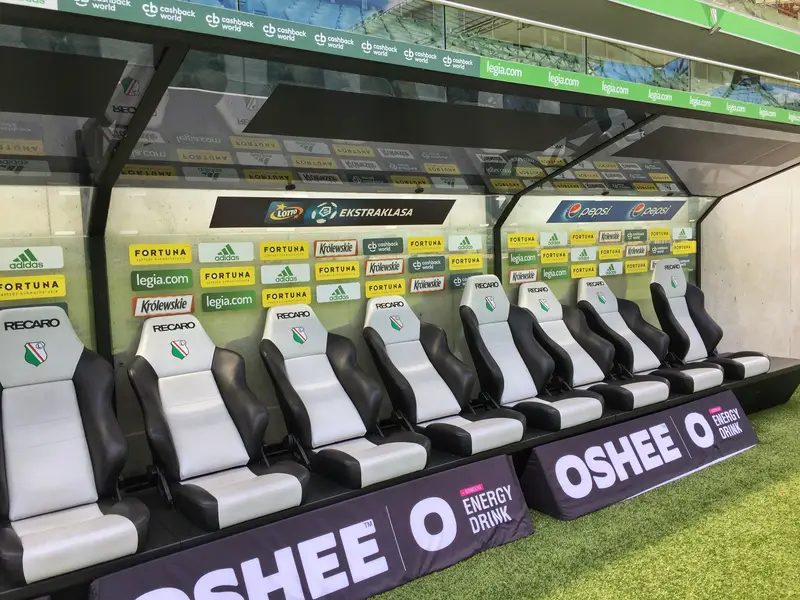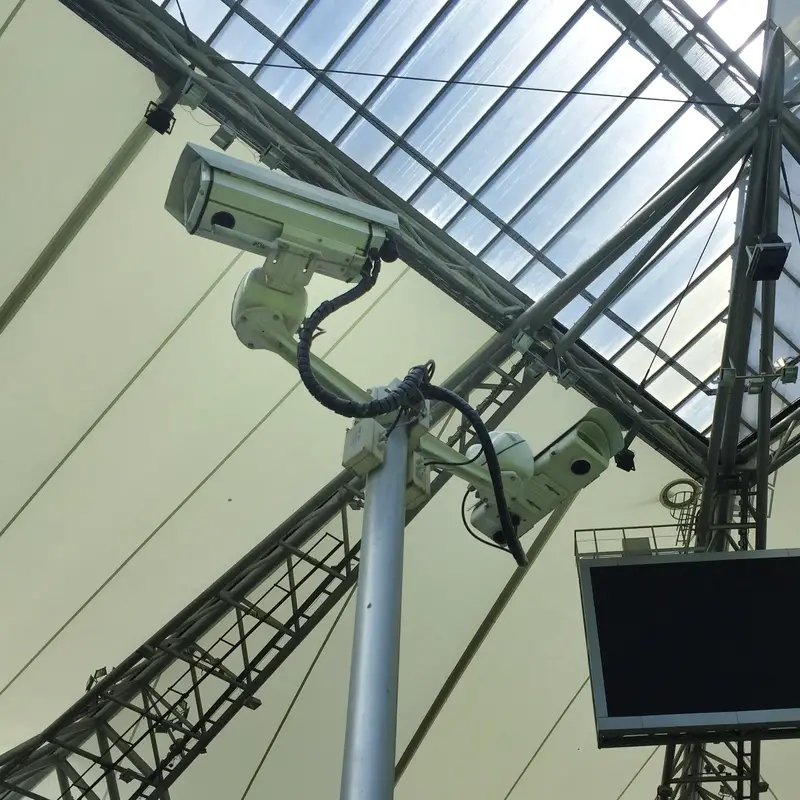I had no idea what to expect when heading to the Polish Army Stadium. Would it all be army related things? Yeap, no, I wasn’t even close.
Turns out the stadium is home to Legia Warsaw. They play all of their home games at the Polish Army Stadium, (a.k.a Marshall Józef Piłsudski’s Municipal Stadium). There’s no army personnel in sight here.
The club has a strong record as the Polish Champion winners 13 times and claiming the Polish Cup 18 times.
My Legia Warsaw Stadium Tour Review
The tour started right on schedule at midday having paid 20 zl (latest prices/tour details here). In the group was 12 people plus our guide, Kamil.
There was nine Polski speakers and three English speakers. So like the tour in Poznan, the guide would need to relay the information in two languages.
We went straight into a little media room to get a headset and a tablet. I thought this meant we were going to go on a guided audio tour, which I would have been okay provided there was an English option.
Anyhow, once we were all set up it was into the stadium where we took a seat and our guide started chatting away in Polski. At this stage, I wasn’t aware there were two others (lovely Danish couple) who couldn’t speak English. I thought I was just along for the ride. When he got everyone to watch something on our tablet, I went to have a quick chat and discovered he would relay the information in English afterward. Would have been nice to know that in advance.
Some history of Legia Warsaw. In 1916 a Legia soldier founded the club in the town Maniewicze, a few hundred kilometres from Warsaw during WWI. The club started playing out of Warsaw the following year before moving to the current stadium location in 1930.
Interesting Facts About Polish Army Stadium a.k.a Nowy Stadion)
- Stadium capacity is 31,103, which can be increased with standing seats if required
- The stadiums current construction was completed in 2011. Previous capacity was 14,000
- Tgere are 12 commentary boxes. Seems excessive to me?
- The grass in the stadium comes from Germany & is changed every couple of years at a cool ~500,000 zloty each time
- The height of the stadium can’t higher than the nearby Ujazdow Castle (the stadium is as high as it can go right now!)
RELATED POST: 300+ SPORTS MUSEUMS & HALLS OF FAME
Where Do The Fans Sit?
As Kamil was chatting I couldn’t help but ask about where the Ultras sit. The stadium doesn’t usually sell out for regular Ekstraklasa games yet the northern stand seats are dedicated to the passionate Ultras.
A quick story about Legia Ultra fan: Legia Ultra fans are loyal fans but they didn’t have it all their own way. In the 1970’s a razor billboard was in the centre of the eastern stand. This became known as the area for Ultras to sit, sing and be jolly. They became known as the Razors (Zyleta in Polish). In 1995 the Razor billboard was removed as punishment for violence during the Polish CUp. Now they sit in northern stand.
There are 1,800 regular visitor seats jammed into the southwest corner of the stadium (on the opposite side of the Ultra fans). They have a big mesh net in front of them to deter them from throwing things onto the field.
Regular fans? They stick to the east and west grandstands.
Back To The Tour…
We moved to the media seating area and the VIP rooms. The only thing of note to me was the awesome way the owners of one of the rooms customized the walls with art of themselves. I’d probably do that too.
The cost of a VIP box is about 100,000 euro a year. You can come to your box every day of the year, watch the 25-30 Legia Warsaw games with 11 of your friends.
We were then into the locker rooms and press room (173 chairs, several translators) for post-match interviews. I was being silly posing for a photo then learned many Legia fans create the L-shape we’ve all made with our hands in a sign of support. Growing up, making that sign meant loser to whoever you were looking at.
Before we went pitch side we saw photos of every playing member and coach of Legia Warsaw in history which was quite cool. This was quite a big open area before players run out on to the field.
Then there was this sign which my regular Polski translator, Aga converted is for me:
To be defeated, and not give in is a victory, to win and rest on your laurels is a defeat.
Going Pitch Side
We finished off the tour going pitch side checking out the view and touching the hallowed turf. Look at all the security cameras found all around the stadium. So many!
The stadium tour took was about 70 minutes. We didn’t go on a big loop of the stadium which saved some time. It’s tough to gauge if this was enough time as I couldn’t exactly understand 70% of the tour so there was ample time for photos. If we were all English speakers, maybe we would have moved faster. Although Kamil was great about letting us take photos in the press room and pitch side.
Turns out there is a Legia Warsaw museum at the stadium as well but I was in a hurry and missed it. It’s free to visit.
How To Get To The Polish Army Stadium
You can find the best directions on the Legia site here, or you can find the stadium on Google Maps here.
Is The Tablet Any Use?
We used it, but I think the context of it wasn’t great given us English speakers couldn’t understand the conversation immediately before the video was playing.
Polish Army Stadium Contact Details
Phone number: + 48 22 318-2-000
e-mail: [email protected]
Related Staduim Tour Reviews:
Camp Nou Tour Review
National Stadium of Warsaw Tour Review

